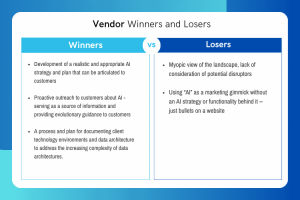
Companies are looking for video professionals all the time. To make yourself the obvious first choice, you need to show your talents to the world. Of course you have the slick showreel that highlights your finest work; the critical next step is getting it in front of as many potential clients as possible. Your own website is the obvious location, but there are other invaluable (and cost-efficient) ways of getting your work in front of new people. Here’s our guide to growing your freelance video business online.
1 Website
This is a no-brainer, but it’s worth reiterating just how key your own website is to gaining recognition and credibility: Your website is the digital version of you, and by far your best marketing tool. Make it easy for potential clients to view your showreel, understand your particular talents, and see any awards or press you’ve picked up. You can also list notable clients and testimonials, and an “about me” section will help people get to know the person behind the work – often a more significant factor than you’d think. Please make sure you only showcase your best and most recent work – and be sure to keep your site up-to-date! Lastly, it seems obvious, but is often overlooked: make your contact details super easy to find, and remember to link to all your social media accounts.
Tips for a winning website:
- Differentiate yourself
Make sure your website conveys what you do best. Why should a potential client choose you over someone else? Are you a one-stop-shop for clients or an expert in one particular area of video production? Why do you suit their needs better than anyone else?
- Personal projects
Including personal projects on your site lets potential clients glimpse who you really are and what is important to you. This is your chance to reveal your own creative style that isn’t always present in your business videos (which tend to be creatively dictated by the client).
- Blog
Keeping an industry-related blog shows that you’re not just clocking in and out each day, but that you’re engaged with the video world, and have things to share. Use your blog to show your latest work, talk about industry trends, or discuss a new technique you’ve learnt. This will add depth to your site, increase the credibility of your work, and help with your Google search results (see below). Stick to writing about things you know and care about, and it won’t be as hard as you think.
Where to begin?
You don’t need to hire a developer to have your own functional, beautiful website. There are plenty of easy-to-use website-building tools that have templates, plugins, hosting services, and support. We love the ultra-intuitive Squarespace, and WordPress is a consistently popular choice.
2 SEO (search engine optimization)
In this crowded digital world, findability is critical. Aim to be on the first page of Google search results for your business and location (e.g. ‘motion graphics artist Miami’). Consider terms and keywords that potential clients will use when they search for your services. If you’re a video producer in Miami, Florida, you want your website to show up if someone Googles “video producer Miami”. How to make this happen? SEO – or optimizing your site so it is highly ranked by search engines. Spend some time getting a basic understanding of SEO and and implement as many SEO best practices as you can. And it goes without saying that if you’re employing someone to build and maintain your website, make sure they’re nothing less than an SEO guru.
3 Video sharing platforms
Video sharing platforms are an obvious way of getting your showreel out there, and they’re also handy for embedding videos on your own site.
Vimeo – Vimeo is undoubtedly the go-to platform for the video creative community. Follow filmmakers you like, join discussion groups, comment on videos, and receive (quality!) feedback from other users about your own videos. The video quality (encoding) is superior to YouTube and the website layout is cleaner and simpler. You can also easily control privacy settings and create custom URLs.
YouTube – Having said that, YouTube is still the online video king (4 billion video views each day anyone?), and having your own YouTube channel is a surefire way of getting your work in front of a lot of people (just how relevant they are to your business is another story). Fans of your style can subscribe to your channel and get notified when you post new things. YouTube makes it easy to optimize your video for search and has paid advertising options so that you can target keywords to get your video in front of the right people.
Wistia – Wistia is video hosting for business. For a monthly subscription, you can professionally host and share your videos. If you’re after analytics, Wistia tracks viewing performance by providing the location of viewers, how long they viewed the video for, and when they drop off.
4 Social media
If you haven’t jumped on this bandwagon already, it’s time to invest in social media – just a small amount of time per day will have an effect, but consistency is key. Your new-and-improved social presence will fuel SEO, and give you more channels both to reach out to potential clients, and network with like-minded professionals. For ultra-efficiency, look into social media management systems like HootSuite or Buffer to simultaneously post information across different platforms.
Twitter – Quite frankly, every business that wants to engage with tech-savvy customers is using Twitter. While it might not seem like an obvious avenue for attracting new clients, Twitter is extremely useful for developing relationships with other video professionals, which can lead to referrals and ad-hoc partnerships. As well as tweeting regularly about your own projects and interests, find and follow your favourite filmmakers, video producers and bloggers. Re-tweet tweets from people you admire, and they might just start following you back. Twitter is by far the biggest social media platform for video professionals; some of our favorite tweeters are @PhilipBloom, @5tu, @vincentlaforet, and @iamKanen.
Facebook – Make a page (rather than a profile) for yourself or your business, and start posting about what you’re doing and what you’re interested in. Then get all your friends and contacts to like the page, and spread the word. With over 1.4 billion users, Facebook is seriously mainstream and just about every credible business has a page. But we won’t lie, this also makes it harder than ever to break through the noise.
Google+ – Though it still seems to be an “emerging” social media platform, using Google+ is very helpful for SEO (many big companies such as Starbucks are using Google+ purely for this reason). It works especially well if you post links on Google+ to blog posts on your site.
LinkedIn – Having a LinkedIn profile is mandatory when job seeking in many countries. It’s your online resume, where connections and clients can view your work history, recommend you, and contact you. There’s also a jobs section where you can apply for roles, and it’s very handy to be able to give a link to your LinkedIn profile when someone requests an up-to-date resume at short notice.
Elance – A two-sided marketplace exclusively for creative freelancers, you can list your services and view jobs posted in your area of expertise. For those who are starting out and looking to build their portfolios, it’s certainly worthwhile considering.
5 Encourage referrals
You can invest all you like in social and SEO, but word of mouth is still the most powerful form of marketing. Every time you deliver a project and see a smile on your client’s face, ask them if they know anyone who might need your services and encourage them to recommend you. You could offer incentives for referrals, but at the end of the day professionalism and outstanding work (and delivering on time!) will create the best organic referrals.
If you want to attract more clients, it is essential to invest a good chunk of time to implement and polish these 5 keys to building a successful freelance video business. Having your own personalized website will increase your professionalism and credibility. Implementing top SEO tactics will improve your findability and using multiple social media and video platforms is great for spreading the word about your business and getting noticed. Deliver fantastic work and the word will spread. Good luck!
Business Articles | Business 2 Community
(473)
Report Post










